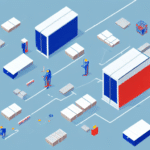Understanding Kitting: Streamlining Operations Across Industries
Kitting is a widely used methodology in various industries, including manufacturing, retail, and healthcare. The term 'kitting' refers to the process of grouping together individual components, parts, or products required for a specific task or project. The primary goal of kitting is to streamline operations, reduce costs, and improve productivity by pre-packaging the items necessary to complete a specific job or product.
The Evolution of Kitting: From Military Logistics to Modern Industries
The concept of kitting has been around for centuries, with its roots in military logistics. During wartime, soldiers were provided with kits containing essentials such as food, water, ammunition, and medical supplies. This foundational practice ensured that soldiers had everything needed for survival and mission success.
In the contemporary landscape, kitting has evolved significantly and is now employed across a wide range of industries. According to a Supply Chain Digital report, kitting has become increasingly popular in the e-commerce sector. Online retailers leverage kitting to bundle products, enhancing the shopping experience by offering convenience and efficiency. For example, a clothing retailer might create a "summer essentials" kit that includes a swimsuit, sunscreen, and a beach towel, thereby saving customers time and boosting sales.
How Kitting Works: A Comprehensive Step-by-Step Guide
1. Identification of Components
The kitting process begins with identifying the individual components and products required for a specific task or project. This step involves a thorough analysis of the project requirements to ensure all necessary items are accounted for.
2. Gathering and Grouping Items
Once the components are identified, the next step is to gather these items and group them systematically. This grouping is essential for creating efficient and accurate kits.
3. Packaging and Labeling
The grouped items are then placed into kits or packages. Proper labeling is crucial to ensure that each kit is clearly identifiable and that the contents are easily accessible.
4. Delivery and Distribution
The final step involves delivering the assembled kits to the user or the required location. In some cases, companies utilize automated kitting processes to further streamline operations and reduce labor costs.
Implementing kitting can significantly reduce errors and improve efficiency. By consolidating all necessary components, businesses can ensure that nothing is overlooked, thereby minimizing the risk of delays and errors, which is particularly vital in time-sensitive projects.
The Benefits of Kitting in Business Operations
Increased Productivity
By pre-packaging everything required for a project, kitting minimizes downtime and accelerates the workflow. This leads to a marked increase in overall productivity.
Cost Reduction
Kitting helps in reducing costs by optimizing inventory management and eliminating the need for extensive manual inventory checks. This streamlined approach contributes to lowering operational expenses.
Improved Accuracy
Grouping all necessary components together ensures that each kit is complete, reducing the chances of missing parts and enhancing the overall accuracy of the assembly process.
Enhanced Customer Satisfaction
Offering complete kits ensures that customers receive all necessary components in one package, leading to increased satisfaction, loyalty, and positive word-of-mouth recommendations.
Efficient Supply Chain Management
Kitting allows businesses to better manage their supply chains by simplifying inventory tracking and ensuring that all required materials are readily available, thus reducing lead times and boosting efficiency.
Kitting vs. Assembly: Understanding the Differences
The terms 'kitting' and 'assembly' are often used interchangeably, but they represent distinct processes. Assembly involves putting together a product from individual parts, while kitting refers to the pre-packaging of these individual components required for assembly.
Kitting is particularly beneficial in scenarios where products have multiple variations or options. By pre-packaging the necessary components for each variation, the assembly process becomes more straightforward and faster. Additionally, kitting reduces waste by ensuring that only the required parts are used, minimizing excess inventory.
The Crucial Role of Accurate Inventory Management in Kitting
Accurate inventory management is vital for the success of kitting operations. Businesses must meticulously track both individual components and pre-packaged kits to ensure that all required items are available for project completion. Inaccurate inventory records can lead to costly mistakes, production delays, and dissatisfied customers.
Effective inventory management also provides insights into which components are frequently used and which are not. This information can be leveraged to optimize inventory levels, reduce unnecessary costs, and prevent stockouts or overstocking. Implementing robust inventory management systems is essential for the seamless functioning of kitting operations and the overall success of a business.
Industries Leveraging Kitting to Optimize Operations
Kitting is utilized across various industries, each benefiting in unique ways:
- Manufacturing: Reduces assembly times, improves efficiency, and boosts productivity.
- Retail: Creates customized product bundles, enhancing the shopping experience.
- Healthcare: Manages inventory levels of medical supplies and equipment efficiently.
- Logistics: Streamlines the distribution and management of products across multiple locations.
- Electronics: Assembles components for devices like smartphones and laptops, ensuring quality control and customization.
According to a Business Insider article, the electronics industry extensively uses kitting to pre-assemble components, thereby reducing assembly times and enhancing quality control. This practice also allows for the customization of electronic devices with specific features or accessories, increasing customer satisfaction and loyalty.
Overcoming Common Challenges in Kitting Processes
Maintaining Accurate Inventory Records
A significant challenge in kitting is maintaining precise inventory records. Businesses can address this by investing in advanced inventory management software and establishing stringent inventory control procedures.
Preventing Assembly Errors
Errors in the assembly process can lead to incorrect or incomplete kits being dispatched, causing delays and customer dissatisfaction. Implementing quality control measures, such as double-checking each kit before shipment and providing detailed instructions to assembly workers, can mitigate these risks.
Enhancing Communication and Collaboration
Lack of communication between departments can hinder the kitting process. Promoting open communication and collaboration through regular meetings and updates ensures that all teams are aligned and informed, facilitating timely and efficient project completion.
Advanced Tools and Technologies in Kitting
Several tools and technologies enhance the efficiency and accuracy of kitting processes:
- Barcode Scanners: Facilitate accurate tracking and identification of components.
- RFID Technology: Provides real-time inventory tracking, enhancing visibility and accuracy.
- Automated Storage and Retrieval Systems: Streamline the storage and retrieval of components, reducing labor costs.
- Inventory Management Software: Optimizes inventory levels and tracks order progress efficiently.
- Robotics: Automates the kitting process, further increasing efficiency and reducing manual labor.
Implementing these technologies can lead to significant improvements in inventory accuracy, labor cost reduction, and overall operational efficiency. Specialized software can aid in creating optimized picking routes, managing inventory levels, and tracking order progress, thereby enhancing the kitting process.
Best Practices for Successful Kitting Implementation
Accurate Component Identification
Ensure that all components required for a project are accurately identified and accounted for to create complete and effective kits.
Strict Inventory Control Policies
Implementing strict inventory control policies helps in maintaining accurate records and optimizing inventory levels, thereby reducing costs and preventing stockouts.
Investment in Advanced Technologies
Investing in the latest technologies and training staff to utilize them effectively can significantly enhance the efficiency and accuracy of the kitting process.
Continuous Monitoring and Adjustment
Regularly monitoring the performance of kitting operations and making necessary adjustments ensures that the process remains efficient and adaptable to changing business needs.
Reliable Supplier Selection
Selecting reliable and trustworthy suppliers who provide high-quality components at competitive prices is crucial for reducing costs and improving the overall efficiency of the kitting process.
Effective Communication and Collaboration
Fostering effective communication and collaboration between different departments ensures that all teams are aligned, facilitating timely and efficient project completion.
In conclusion, kitting is a versatile and valuable process employed across various industries to enhance efficiency, reduce costs, and improve productivity. Successful implementation of kitting requires accurate inventory management, investment in advanced technologies, and effective communication between teams. By adhering to best practices and leveraging the right tools, businesses can optimize their operations, leading to increased profitability and customer satisfaction.






















